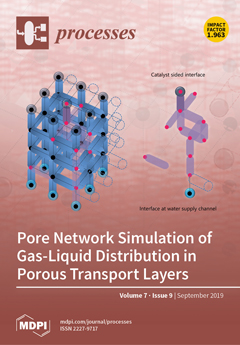Ginkgo biloba leaves are well known for their high content of nutrients and bioactive substances. However, unpleasant smell and a small number of ginkgolic acids greatly reduce the utilization of the leaves. In this work, solid-state fermentation of
G. biloba leaves using
Eurotium
[...] Read more.
Ginkgo biloba leaves are well known for their high content of nutrients and bioactive substances. However, unpleasant smell and a small number of ginkgolic acids greatly reduce the utilization of the leaves. In this work, solid-state fermentation of
G. biloba leaves using
Eurotium cristatum was studied by investigation of the nutrient changes and its feasibility as a functional feed.
E. cristatum could grow on pure
G. biloba leaves and the addition of excipients could significantly improve the growth of
E. cristatum. The optimal medium was with 10% (
w/w) of whole
G. biloba seeds and the optimized water content, pH, inoculum size and fermentation time were 45% (
w/w), 4.5, 4.76 × 10
7 CFU/100 g wet medium, and eight days, respectively. Under the optimal conditions, the spore number increased by about 40 times. The content of flavonoids was greatly increased by 118.6%, and the protein and polyprenyl acetates (PPAs) were increased by 64.9% and 10.6%, respectively. The ginkgolic acids, lignin, and cellulose were decreased by 52.4%, 38.5%, and 20.1% than before, respectively. Furthermore, the fermented
G. biloba leaves showed higher antioxidant activity and held more aroma substances. Thus,
G. biloba leaves fermented by
E. cristatum have potential as s high value-added feed. This is the first investigation of
E. cristatum fermentation on ginkgo leaves, which will facilitate the use of ginkgo leaves in the feed industry.
Full article





